Comic: Tuesday, March 29, 2011
The Seven Dwarfs Facebook Status Updates
Bathroom-Addicted Kitty
In memory of my beautiful cat, Natasha.
Follow on Twitter @fmarciuliano
Follow on Facebook
Hollywood.com Weekend Box Office: March 27, 2011
Hollywood.com: The Sadness That Is Sucker Punch
Follow on Twitter @fmarciuliano
Follow on Facebook
Rejected Children’s Books (Now on Smosh.com)

For the complete gallery of 20 books please go to Smosh.com! Thanks!
Other Links:
The Worst-Selling Books of the Year (So Far)
Excerpts from “I Could Pee on This” and Other Poems by Cats
My Upcoming Coffee Table Books
Notes from Ann Coulter’s Book Editor
The Original Cats Quote Charlie Sheen
Follow on Twitter @fmarciuliano
Follow on Facebook
Sitcom Theme Music: One Day at a Time
Although it may now be hard to fathom, there once was a time when the very idea of a sitcom about a divorced individual was considered not only revolutionary but also potentially immoral. It’s like finding out ABC almost never aired Welcome Back, Kotter because the network feared it would inspire gang violence. Or that The Ghost and Mrs. Muir was almost shelved because it might have been mistaken as an endorsement for necrophilia.
But back in the early 1970’s divorce was still very much a hot-button topic, like nuclear war, feminism and Evel Knievel’s so-called jump over Snake Canyon. In fact, the character of Mary Richards in Mary Tyler Moore was initially conceived as a recent divorcée but producers–fearing a backlash from religious coalitions and anyone who has ever mistaken a baptism for a bullhorn–opted for a “broken engagement” backstory instead (no doubt after weighing such typical late 60’s/early 70’s sitcom alternatives as “moved to Minneapolis after losing her magical powers,” “moved to Minneapolis after her spaceship crashed in southeatern Minnesota” and “moved to Minneapolis after discussing it with her horse, car or enchanted flute”). The overriding idea was never to make television viewers too sad, too irate or too mobilized to notice the commercials…or perhaps confuse them into thinking Mary had just dumped Rob Petrie’s ass.
By the mid-70’s, however, the network honchos believed that viewers were ready to see sitcoms that didn’t so much make them forget their worries as wallow in their miseries. This was the heyday of the “social commentary” sitcom, otherwise known as the “Wait, am I suppose to laugh after hearing Florida’s husband just got killed?” formula. Gone were such time-tested plots as “hillbillies get rich,” “hillbillies swim naked in water tower” and “hillbillies meet Eva Gabor.” In their place were “comedies” about racism, suicide, drug abuse and, in the case of One Day at a Time, marriage gone down the crapper.
Starring Bonnie Franklin, One Day at a Time followed the few triumphs and many travails of recently divorced Ann Romano née Cooper and her two daughters Julia (Mackenzie Phillips) and Barbara (Valerie Bertanelli)–siblings who could only have been related by way of casting–as they laughed, loved and languished in Indianapolis. This was often accompished with the assistance of Dwayne “Florenz” Schneider (Pat Harrington Jr.), the superintendent whose fanatic attachment to the Romano clan was just one plot twist away from him donning a short red wig and disposing of Ann in the apartment building’s furnace.
The overall tone of the show is best summed up by its bouncy theme song, penned by Jeff Barry of “Da Doo Ron Ron,” “Be My Baby” and “Christmas (Please Come Home)” fame. Taking its cue from the show’s subject matter, the lyrics are empowering but never too encouraging, commencing on a note of both resilience and resignation:
This is it. This is it.
This is life, the one you get
So go and have a ball.
Or, to put it another way:
Suck it up. Suck it up.
Wipe those tears, you’re on your own
So maybe buy a cat.
The song then ups the ante in the second verse as it segues from a proclamation of “keep your chin up” to “never let your guard down”:
This is it. This is it
Straight ahead and rest assured
You can’t be sure at all.
Or:
You might be walking down the street
Minding your own business
When suddenly BAM! Falling jet turbine.
What’s most striking about the theme song in the first two verses is the notion of “This is it.” On the one hand it strikes a rather final, almost futile chord, one seemingly at odds with a show about second chances. It’s like hearing a disapproving parent say “You made your bed now lie in it” or “Fingers don’t grow back, now do they?” But on the other hand “This is it” can serve as a wake-up call, a realization of life’s transitory nature and the need both to make the most of what it has to offer and make a stand in the face of adveristy. It’s another way of saying, “If life gives me lemons then I’ll make hard lemonade” or “I’ve got two fists for fighting and one finger for the world.”
However, not wanting to turn into the equivalent of “I Am Woman (So Hear Me Alternately Roar and Sob Copiuosly into My Macramé Pillow), the lyrics take a turn for the decidedly hopeful and heartening in the third verse:
So while you’re here enjoy the view
Keep on doing what you do
So hold on tight we’ll muddle through
One day at a time, One day at a time.
These were invigorating–if not downright imperative–words for a generation still reeling from such calamaties as Watergate, Vietnam, stagflation, the OPEC oil crisis, Children of God and prog rock. Yes, we as a nation had been through some tough times. And we as a nation could only expect to face further woes (read: 1980’s). But as long as we had the strength of Bonnie Franklin’s character (a trait that came in good stead after her divorce, after her boyfriend was killed in a car crash, after she had to raise her boyfriend’s son alone, after her eldest daughter abandoned her own family and–in a very special holiday episode–after she was knifed by St. Nick), the spunkiness of Valerie Berinelli’s character and the countless kilos of pure Bolivian snow that made Mackenzie Phillips such a character, we’d be able to get through any plot device. And so in celebration of that very realization, the song concludes on a note of optimism and a nod to “The Hustle”:
So up on your feet. Up on your feet
Somewhere there’s music playing.
Don’t you worry none
We’ll just take it like it comes.
One day at a time, One day at a time (Repeat)
So remember, whenever you find yourself feeling particularly despondent, whenever you feel as if life’s demands are proving far too overwhelming, whenever you feel as if the only way out of your problems is through inhaling carbon monoxide, injesting sleeping pills or inquring about that job in marketing, have no fear. Just remember that “this is it,” “have a ball” and “buy a cat.”
Other Links:
Notes from Ann Coulter’s Book Editor
Your War Time “Free Sandwich” Punch Card
Excerpts from “I Could Pee on This” and Other Poems by Cats
My Upcoming Coffee Table Books
The Original Cats Quote Charlie Sheen
What My Possessions Think of Me
Follow on Twitter @fmarciuliano
Follow on Facebook
What My Possessions Think of Me
Catalog of Unfit Toys: Ennuija Board
 What does the future hold in store for you? How could it possibly matter? When did these kinds of questions ever hold any significance for you? Why even bother reading the rest of this paragraph?
What does the future hold in store for you? How could it possibly matter? When did these kinds of questions ever hold any significance for you? Why even bother reading the rest of this paragraph?
Introducing Ennuija Board, the exciting “talking board” for those who, quite honestly, have heard enough and can’t imagine that anyone or anything will ever have something interesting to say again.
First, gather around a few of your closest friends you never really had anything in common with and who you can’t possibly feel further apart from even as you literally sit right next to them. Second, place your hand on the moving indicator because that’s what is expected of you and not because you expect even the slightest hint of fun or fortune in return. Then third, ask yourself why you bothered to play in the first place. Seriously, what could be more tedious than a parlor game? The endless, enervating chit-chat that goes with it? The dead-eye stares of people mere fate has dictated are your companions? The distant sounds of the grandfather clock in the hall, each chime a death knell for another minute forever lost and forgotten?
Perfect for mandated get-togethers, evenings, mornings or noons that just won’t seem to end or as yet another thing to do while you contemplate why there will never, ever be anything interesting, inspiring or important for you to do, Ennuija Board won’t so much make your day as mark it on a calendar already teeming with X’s but incapable of answering “Why?”
See More at The Catalog of Unfit Toys.
Other Links:
Notes from Ann Coulter’s Book Editor
Your War Time “Free Sandwich” Punch Card
Excerpts from “I Could Pee on This” and Other Poems by Cats
My Upcoming Coffee Table Books
The Worst-Selling Books of the Year (So Far)
Follow on Twitter @fmarciuliano
Follow on Facebook
Inessential Film Critique: Gumby on the Moon
Today I want to share with you one of the most quietly haunting yet critically lionized films of the later half of the 20th century. A celluloid masterpiece that left the Cahiers du cinéma practically grasping for superlatives, as if vocabulary itself had proven an insufficient instrument for emotional and intellectual expression. An exemplar of the art of motion pictures that disrupted expectations, disquieted viewers and displayed a genius that years later Pauline Kael said proved once and for all that “rather than ask the deaf cosmos ‘What’s the meaning of life?’ we should instead inquire of ourselves ‘What does it mean to feel truly alive?'” A film titled Gumby on the Moon.
Since the endless merits of Gumby on the Moon have caused the very shelves of Film Comment to groan under the sheer weight of published praise, it is probably best we focus on the movie’s most celebrated achievements:
* No other film has ever been so frighteningly unequivocal in it’s simple yet brutal philosophy–the point of life is to keep living. Watch as rather than question how he came to be on the moon, Gumby quickly–almost instinctively–takes to the sole task of surviving on its surfacing, eluding the seemingly unmotivated yet all too menacing and deliberate pylons. In fact, the very battle of wits between our hero and his attackers makes us question if our enemies are the results of our actions or does our very existence begat combatants. In short, are we as individuals in control of anything outside of our desire to see yet another day?
* Around the same time Jean-Luc Godard and Luis Buñuel reveled in what they perceived as the very foundation of humanity–misanthropy–master filmmaker and Gumby creator Art Clokey no doubt realized that while our sole drive and purpose was survival, he by no means considered it a selfish impulse (after all, we all must help the one, for in their endurance we all continue). Note how although abandoned, Gumby is never truly alone but rather under the watchful eye of an attentive, altruistic being–in this case, his father. Now whether we are to take Clokey’s notion of “father” literally or as a none-too-subtle allusion to a more heavenly “Father” has long been debated in the halls of film academia and so will almost certainly not be resolved here today. But that very scenario does allow for one of the most oft-quoted and debated lines in movie history–“Yep, he’s on the moon all right. I’ve got to go after him.”
* While most film scores try to fill your senses in the hopes of conjuring reality and reaction, the soundtrack to Gumby on the Moon actually seems to create space, allowing for a distance that consequently makes you feel that much closer to the protagonist. This very aural space also permits the viewer to recall their own desires for absolute silence and solitude. As humans we all long for seclusion from time to time but fear that what may at first be an occasion for personal reflection could lead to an extended period of social regression. How much time do we truly require alone? How regularly do we need the company of others? If we often find that we are alone does that mean we are lonely? If we often find ourselves with others does that mean we do not effectively exist as one? These are the questions the score allows us to ponder, with no pat answer ever provided.
* In the world of Gumby reality is the fiction we compose with the tools most immediate to us. Note how the moon is clearly not the moon but rather a model hung by string over a table. Still, as far as the protagonist is concerned is it not just as desolate and true as our own lunar companion? In a sense the movie’s art direction is a statement on the act of art direction itself, boiled down to a filmic de glace for a rich, potent minimalist approach that makes the set of Dogville look like Cleopatra.
* The dad’s fur astronaut coat is simply to die for.
Well, that is all for today. I hope you found this discussion both enlightening and edifying. Please join me next time when I discuss the conceptual and artistic triumph that is Catch That Pigeon: The Pilot Episode.
Other Links:
Notes from Ann Coulter’s Book Editor
Your War Time “Free Sandwich” Punch Card
Excerpts from “I Could Pee on This” and Other Poems by Cats
My Upcoming Coffee Table Books
The Worst-Selling Books of the Year (So Far)
Follow on Twitter @fmarciuliano
Follow on Facebook
























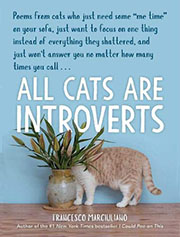
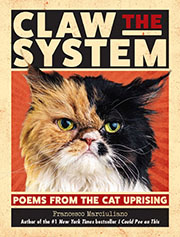




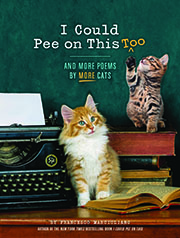


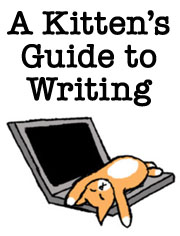


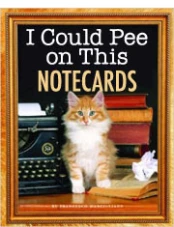




















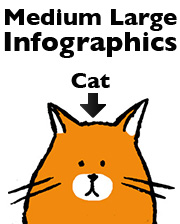











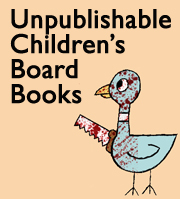









67 comments